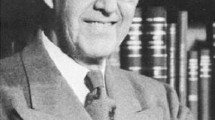Abstract
An efficient, modular method for the synthesis of highly substituted tetrahydroquinoline systems is described. The Lewis acid catalyzed interaction of dihydropyridines with glyoxalate and anilines affords the heterocyclic parent systems in good yields. Tandem one-pot processes allow the incorporation of additional components: a preliminary nucleophilic attack on pyridinium salts generates the reactive dihydropyridine in situ, and subsequent electrophilic reactions on the secondary amine complete the assembly of the final targets, which have up to 6 diversity points.
Similar content being viewed by others
References
Ugi, I., Domling, A. and Werner, B. J., Since 1995 the new chemistry of multicomponent reactions and their libraries, including their heterocyclic chemistry, J. Heterocycl. Chem., 37 (2000) 647-658.
Bienaymé, H., Hulme, C., Oddon, G. and Schmitt, P., Maximizing synthetic efficiency: multi-component reactions lead the way, Chem. Eur. J., 6 (2000) 3321-3329.
Ugi, I. and Heck, S., The multicomponent reactions and their libraries for natural and preparative chemistry, Comb. Chem. High Throughput Screening, 4 (2001) 1-34.
Muegge, I. Pharmacophore features of potential drugs, Chem. Eur. J., 8 (2002), 1977-1981.
Wess, G., Urmann, M. and Sickenberger, B., Medicinal chemistry: challenges and opportunities, Angew. Chem. Int. Ed., 40 (2001) 3341-3350.
Collins, I., Rapid analogue synthesis of heteroaromatic compounds, J. Chem. Soc., Perkin Trans. 1, (2002) 1921-1940.
Grieco, P. and Bahsas, A., Role reversal in the cyclocondensation of cyclopentadiene with heterodienophiles derived from arylamines and aldehydes: synthesis of novel tetrahydroquinolines, Tetrahedron Lett., 29 (1988) 5855-5858.
Kobayashi, S., Ishitani, H. and Nagayama, S., Lanthanide triflate catalyzed imino Diels-Alder reactions; convenient synthesis of pyridine and quinoline derivatives, Synthesis, (1995) 1195-1202.
Kiselyov, A. S., Smith II, L. and Armstrong, R. W., Solid support synthesis of polysubstituted tetrahydroquinolines via 7. Takeuchi, I., Shibata, Y. and Hamada, Y., Reaction of Nalkylheteroaromatic cation with phosphite, Heterocycles, 23 (1985) 1635-1638.
For the regioselective formation of 4-indolyl-1,4-DHPs, see: Lavilla, R., Gotsens, T. and Bosch, J., Regioselective synthesis of indolyldihydropyridines. A remarkable solvent effect, Synthesis (1991) 842-844.
For the regioselective formation of 4-sulfanyl-1,4-DHPs, see: Zoltewicz, J. A., Helmick, L. S. and O'Halloran, J. K., Competitive addition of carbon, sulfur, and nitrogen nucleophiles to quaternized heteroaromatic compounds in liquid ammonia, J. Org. Chem., 41 (1976) 1308-1313.
Volochnyuk, D. M., Kostuyk, A. N., Pinchuk, A. M. and Tolmachev, A. A., Addition of some heterocycles to N-benzyl-3-cyanopyridinium chloride, Tetrahedron Lett., 44 (2003) 391-394.
Takamura, M., Funabashi, K., Kanai and Shibasaki, M., Catalytic enantioselective Reissert-type reaction: development and application to the synthesis of a potent NMDA receptor antagonist (-)-L-689,560 using a solid-supported catalyst, J. Am. Chem. Soc., 123 (2001) 6801-6808, and references cited therein.
For a tandem transformation linking two 3CRs, see: (a) Portlock, D. E., Ostaszewski, R., Naskar, D. and West, L., A tandem Petasis-Ugi multi component condensation reaction: solution phase synthesis of six dimensional libraries, Tetrahedron Lett., 44 (2003) 603-605.
Constabel, F. and Ugi, I., Repetitive Ugi reactions, Tetrahedron, 57 (2001) 5785-5789.
Author information
Authors and Affiliations
Corresponding author
Rights and permissions
About this article
Cite this article
Lavilla, R., Carranco, I., Díaz, J.L. et al. Dihydropyridines in MCRs. Tandem processes leading to modular tetrahydroquinoline systems with up to 6 diversity elements. Mol Divers 6, 171–175 (2003). https://doi.org/10.1023/B:MODI.0000006756.83821.80
Issue Date:
DOI: https://doi.org/10.1023/B:MODI.0000006756.83821.80




